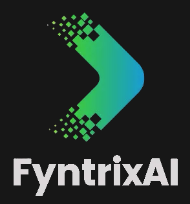Introduction to Ethereum
What is Ethereum?
Ethereum is a decentralized blockchain platform that enables the development and execution of smart contracts and decentralized applications (DApps). It was proposed by Vitalik Buterin in late 2013 and launched in 2015. Ethereum operates on its native cryptocurrency called Ether (ETH), which serves as the fuel for the network.
Unlike traditional cryptocurrencies like Bitcoin, Ethereum is designed to be a programmable platform. It provides developers with the tools and infrastructure to build decentralized applications that can execute smart contracts automatically without the need for intermediaries.
The Purpose and Function of Ethereum
The primary purpose of Ethereum is to create a decentralized and trustless platform for executing smart contracts and building decentralized applications. Smart contracts are self-executing contracts with the terms of the agreement directly written into the code. They automatically execute when predefined conditions are met, eliminating the need for intermediaries and enabling secure and transparent transactions.
Ethereum’s blockchain technology enables the execution of these smart contracts by providing a decentralized, tamper-proof, and transparent platform. It utilizes a distributed network of computers, called nodes, to validate and record transactions on the blockchain. This decentralized nature ensures that no single entity has control over the network, making it resistant to censorship, fraud, and downtime.
With Ethereum, developers can create a wide range of decentralized applications that go beyond simple transactions. These applications can include decentralized finance (DeFi) platforms, decentralized exchanges, gaming platforms, supply chain management systems, and much more. The possibilities are virtually limitless, as Ethereum provides a powerful and flexible platform for innovation.
By understanding the fundamental aspects of Ethereum, including its purpose, function, and underlying blockchain technology, individuals can gain a clearer picture of its potential and the transformative impact it can have on various industries. To learn more about specific topics related to Ethereum, such as its price, wallets, mining, and blockchain, refer to our articles on ethereum price, ethereum wallet, ethereum mining, and ethereum blockchain.
Understanding Blockchain Technology
To comprehend Ethereum fully, it is essential to have a solid understanding of blockchain technology and how Ethereum utilizes it.
Basics of Blockchain Technology
Blockchain technology is a decentralized and distributed ledger system that enables the secure and transparent recording of transactions. It consists of a chain of blocks, where each block contains a set of transactions. These blocks are linked together using cryptographic hashes, forming an immutable record of all transactions.
The fundamental characteristics of blockchain technology include:
-
Decentralization: The blockchain operates on a network of computers known as nodes, eliminating the need for a central authority. This decentralization ensures that no single entity has complete control over the network.
-
Transparency: All transactions recorded on the blockchain are visible to all participants in the network. This transparency enhances trust and accountability.
-
Security: Blockchain utilizes cryptographic algorithms to secure transactions. Once a block is added to the chain, it becomes extremely difficult to alter or tamper with the data.
How Ethereum Utilizes Blockchain Technology
Ethereum is a decentralized platform that leverages blockchain technology to enable the development and execution of smart contracts and decentralized applications (DApps). It expands on the traditional concept of blockchain by introducing a programmable layer.
The main ways in which Ethereum utilizes blockchain technology are:
-
Smart Contracts: Ethereum introduced the concept of smart contracts, which are self-executing agreements with predefined conditions. These contracts are stored on the Ethereum blockchain and automatically execute when the specified conditions are met. Smart contracts enable the automation of various processes without the need for intermediaries.
-
Decentralized Applications (DApps): Ethereum provides a platform for the development and deployment of decentralized applications. These DApps utilize smart contracts to provide functionalities and services without relying on a central authority. Ethereum’s blockchain serves as the underlying infrastructure for these applications, ensuring transparency and security.
By integrating blockchain technology, Ethereum enhances the security, transparency, and efficiency of various processes. It enables developers to build decentralized applications and execute smart contracts, opening up new possibilities for industries such as finance, supply chain management, and gaming.
Understanding how Ethereum harnesses the power of blockchain technology is crucial to comprehending its potential and the impact it can have on various sectors. For more information about Ethereum, its features, and applications, refer to our comprehensive article on what is Ethereum.
Key Components of Ethereum
To understand Ethereum fully, it’s essential to familiarize yourself with its key components. These components include Ether (ETH), smart contracts, and decentralized applications (DApps).
Ether (ETH)
Ether, denoted by the symbol ETH, is the native cryptocurrency of the Ethereum platform. It serves as a means of value exchange within the network. Similar to how Bitcoin operates, Ether can be bought, sold, and used for various transactions. However, Ethereum’s primary purpose is not solely as a cryptocurrency; it’s a platform that enables the creation and execution of smart contracts.
Ether is traded on various cryptocurrency exchanges and its price can fluctuate based on market demand and supply. To keep up-to-date with the latest Ether price, you can refer to our article on ethereum price.
Smart Contracts
Smart contracts are self-executing contracts with predefined rules and conditions. They are written in code and stored on the Ethereum blockchain. Smart contracts automatically execute when the predetermined conditions are met, eliminating the need for intermediaries or third parties.
Smart contracts enable a wide range of applications, from simple transactions to complex decentralized applications. They provide transparency, security, and efficiency, ensuring that agreements are upheld without relying on a central authority. To learn more about smart contracts and their implications, check out our article on what is ethereum.
Decentralized Applications (DApps)
Decentralized applications, commonly known as DApps, are applications that run on a blockchain network, such as Ethereum. Unlike traditional applications that are controlled by a central authority, DApps operate in a decentralized manner, utilizing the security and immutability of the blockchain.
DApps leverage the capabilities of smart contracts to provide unique functionalities and features. They can be developed for various purposes, including finance, gaming, supply chain management, and more. By removing the need for intermediaries, DApps promote transparency, security, and user empowerment.
To get started with Ethereum and explore DApps, you’ll need an Ethereum wallet. Our article on ethereum wallet provides useful information on choosing and setting up a wallet.
Understanding the key components of Ethereum, including Ether, smart contracts, and DApps, provides a solid foundation for comprehending the capabilities and potential of this blockchain platform. As you delve deeper into Ethereum, you will discover the intricate workings of the Ethereum Virtual Machine (EVM), consensus mechanisms, and the impact of Ethereum on various industries. To expand your knowledge, feel free to explore our articles on ethereum mining, ethereum blockchain, and ethereum investment.
How Ethereum Works
To understand how Ethereum works, it is important to explore its key components and underlying technology. In this section, we will delve into the Ethereum Virtual Machine (EVM), the consensus mechanism known as Proof of Stake, and the concept of mining and gas fees.
Ethereum Virtual Machine (EVM)
At the heart of Ethereum is the Ethereum Virtual Machine (EVM). The EVM is a runtime environment that executes smart contracts, which are self-executing contracts with predefined rules and conditions. It is a decentralized, Turing-complete virtual machine that allows developers to write and deploy smart contracts on the Ethereum blockchain.
The EVM operates on the principle of executing code in a sandboxed environment, ensuring that the execution is isolated and secure. This enables developers to create a wide range of decentralized applications (DApps) and protocols on the Ethereum platform.
Consensus Mechanism – Proof of Stake
Ethereum is currently transitioning from the Proof of Work (PoW) consensus mechanism to the more energy-efficient Proof of Stake (PoS) mechanism. With PoS, the validation of transactions and the creation of new blocks on the Ethereum blockchain is based on the ownership of cryptocurrency, known as Ether (ETH), rather than computational power.
In the PoS model, validators are chosen to create new blocks and validate transactions based on the number of ethers they hold and are willing to “stake” as collateral. This consensus mechanism aims to reduce the environmental impact of mining and increase the scalability and security of the Ethereum network.
Mining and Gas Fees
Mining is the process of validating and adding new transactions to the Ethereum blockchain. However, with the shift to PoS, mining in Ethereum will be replaced by “staking” as validators participate in block creation.
Gas fees, on the other hand, are an integral part of the Ethereum network. Gas is a unit that measures the computational effort required to execute operations on the Ethereum blockchain. Every transaction and smart contract execution in Ethereum consumes a certain amount of gas. Gas fees are paid by users to compensate the validators for the computational resources utilized.
The cost of gas is influenced by factors such as the complexity of the transaction or smart contract and the demand for computational resources at a given time. Users can determine the gas price they are willing to pay, which affects the priority and speed of their transactions being processed.
Understanding the workings of the Ethereum Virtual Machine (EVM), the Proof of Stake consensus mechanism, and the concepts of mining and gas fees provides a solid foundation for comprehending the inner workings of the Ethereum network. These elements contribute to the security, scalability, and efficiency of the Ethereum blockchain, making it a powerful platform for decentralized applications and smart contracts.
Advantages and Potential Applications of Ethereum
Ethereum, with its unique features and capabilities, offers several advantages and potential applications within the world of blockchain technology. Let’s explore some of these advantages and the industries that can benefit from Ethereum’s programmability, decentralization, and trust.
Programmability and Flexibility
One of the key advantages of Ethereum is its programmability and flexibility. Unlike other cryptocurrencies, Ethereum allows developers to write and execute smart contracts, which are self-executing agreements with the terms of the contract directly written into code. This programmability enables the creation of decentralized applications (DApps) on the Ethereum platform, opening up a world of possibilities.
With Ethereum’s programmability, developers can create a wide range of innovative applications, from decentralized finance (DeFi) platforms and decentralized exchanges (DEX) to supply chain management systems and voting systems. The flexibility of Ethereum’s smart contracts allows for the automation of complex processes, reducing the need for intermediaries and increasing efficiency.
Decentralization and Trust
Decentralization is a core principle of Ethereum. The Ethereum blockchain is distributed across a network of computers, known as nodes, which collectively maintain and validate the blockchain. This decentralized nature ensures that no single entity has control over the network, making it resistant to censorship and single points of failure.
Ethereum’s decentralized architecture also enhances trust. By eliminating the need for intermediaries and relying on cryptography and consensus mechanisms, such as proof of stake (PoS), Ethereum provides a transparent and secure platform for conducting transactions and executing smart contracts. This trust factor is particularly valuable in industries where transparency and security are paramount, such as finance, supply chain, and healthcare.
Use Cases and Industries Impacted by Ethereum
Ethereum’s advantages and capabilities have the potential to revolutionize various industries. Some of the key industries that can benefit from Ethereum include:
-
Finance: Ethereum has given rise to decentralized finance (DeFi), which enables the development of financial applications without the need for intermediaries. DeFi platforms built on Ethereum allow for peer-to-peer lending, decentralized exchanges, stablecoins, and more, providing individuals with greater control over their financial assets.
-
Supply Chain: The traceability and transparency offered by Ethereum’s blockchain can greatly improve supply chain management. With Ethereum, businesses can create decentralized applications to track and verify the origin, quality, and movement of goods, reducing fraud and ensuring ethical practices.
-
Healthcare: Ethereum’s decentralized architecture can transform healthcare systems by enabling secure and interoperable health records, improving data privacy and accessibility. Smart contracts can facilitate the sharing of medical information among healthcare providers, enhancing patient care and reducing administrative burdens.
-
Gaming: Ethereum’s ability to support non-fungible tokens (NFTs) has revolutionized the gaming industry. NFTs allow for the ownership and transfer of unique in-game assets, giving players true ownership and the ability to monetize their virtual possessions.
These are just a few examples of the many industries that can benefit from Ethereum’s capabilities. As more developers and businesses explore the potential of Ethereum, we can expect to see further innovation and disruption across various sectors.
By harnessing the power of programmability, decentralization, and trust, Ethereum has emerged as a leading platform for blockchain-based applications. Its advantages and potential applications make it a powerful tool for transforming industries and shaping the future of decentralized technology.






